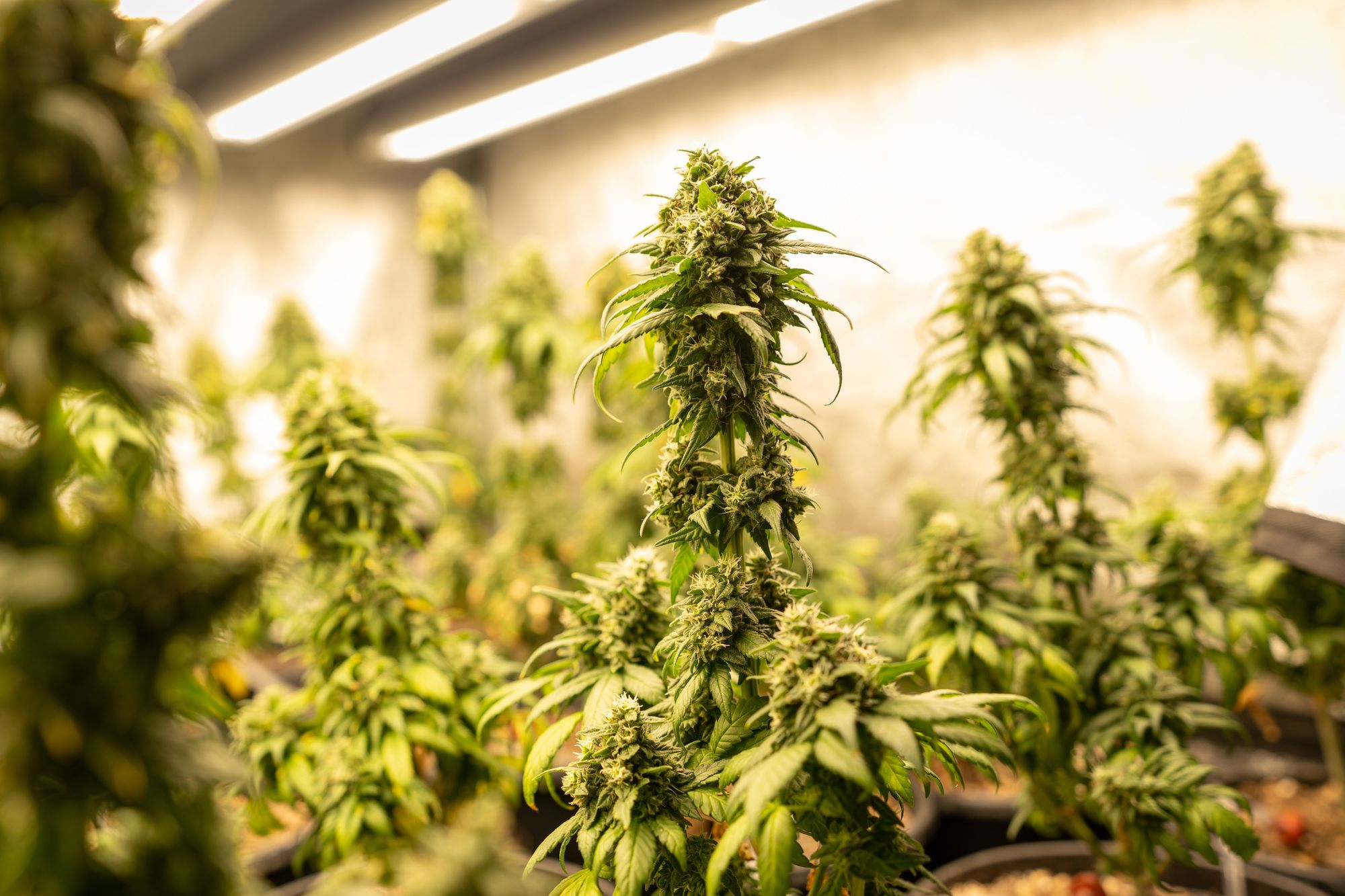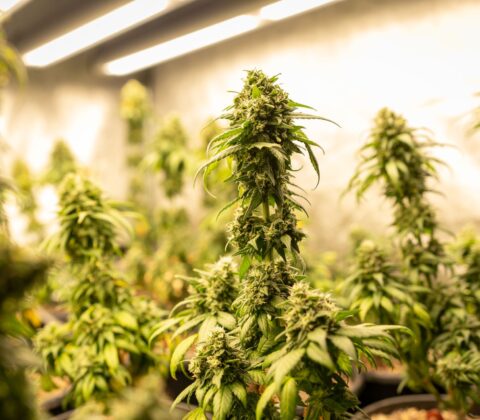

A Beginner’s Guide to Planting Cannabis Seeds Indoors
Introduction:
With the growing interest in cultivating cannabis for personal or medicinal use, many individuals are opting to grow their own plants indoors. Starting from seeds can be an exciting and rewarding journey, but it requires careful attention to detail to ensure successful growth. In this guide, we’ll walk you through the steps of planting cannabis seeds indoors, from selecting the right seeds to providing the optimal growing conditions for healthy plant development.
Choosing the Right Seeds:
Before diving into the planting process, it’s essential to choose high-quality cannabis seeds. Factors to consider when selecting seeds include genetics, strain type, and desired effects. Whether you’re looking for a high-THC strain for recreational use or a CBD-rich variety for medicinal purposes, research different strains to find the one that best suits your needs.

Additionally, ensure that you acquire seeds from a reputable source to guarantee their authenticity and viability. Look for trusted seed banks or dispensaries with a track record of providing quality seeds to avoid potential issues during the cultivation process.
Preparing the Growing Environment:
Creating an optimal growing environment is crucial for the successful cultivation of cannabis indoors. Start by setting up a dedicated grow space that offers sufficient room for your plants to thrive. Consider factors such as lighting, ventilation, temperature, and humidity control.
Investing in proper lighting is essential for promoting healthy growth during the seedling stage. While natural sunlight is ideal, many growers opt for artificial lighting options such as LED, HPS, or fluorescent grow lights. Ensure that your chosen lighting system provides the appropriate spectrum and intensity for seedling development.
Maintaining proper ventilation helps prevent issues such as mold and mildew while ensuring adequate airflow for optimal plant growth. Use exhaust fans, air filters, and oscillating fans to regulate airflow and maintain consistent environmental conditions.
Temperature and humidity play a critical role in cannabis cultivation, especially during the seedling stage. Aim for a temperature range of 70-85°F (21-29°C) and a relative humidity level of 50-70% to create a favorable environment for seed germination and early growth.
Planting Cannabis Seeds:
Once you’ve prepared your growing environment, it’s time to plant your cannabis seeds. Follow these steps for successful seedling establishment:
1. Germination:
- Start by germinating your seeds using your preferred method. Common germination techniques include placing seeds between moist paper towels or soaking them in water until they sprout.
- Keep the germination environment warm and humid to encourage the seeds to sprout. Check regularly for signs of germination, which typically occur within 1-7 days.
2. Seedling Containers:
- Choose small containers or seedling trays filled with a high-quality potting mix or seed starter soil. Ensure that the soil is well-draining and free of pests or pathogens.
- Gently place the germinated seeds into the soil, burying them about 1/4 to 1/2 inch deep. Lightly cover the seeds with soil and water gently to ensure moisture penetration.
3. Lighting and Watering:
- Position your seedlings under a light source with a 18/6 light cycle (18 hours of light, 6 hours of darkness) to promote healthy growth.
- Water your seedlings gently, ensuring that the soil remains consistently moist but not waterlogged. Avoid overwatering, as it can lead to root rot and other issues.
4. Nutrient Requirements:
- During the seedling stage, cannabis plants require minimal nutrients, as they rely on the nutrients stored in the seed casing.
- If using a nutrient-rich potting mix, wait until the second or third week of growth before introducing a diluted nutrient solution.
5. Monitoring and Care:
Once your cannabis seeds have germinated and seedlings have emerged, it’s crucial to monitor their progress and provide appropriate care. Keep an eye on the following factors:
- Growth Progress: Monitor the growth of your seedlings, ensuring that they develop healthy roots and foliage.
- Environmental Conditions: Maintain consistent temperature, humidity, and lighting levels to support optimal growth.
- Watering and Nutrient Needs: Adjust watering and nutrient schedules as your plants mature, being careful not to overfeed or underwater.
- Pest and Disease Management: Keep an eye out for signs of pests or diseases, such as yellowing leaves or unusual spots, and take prompt action to address any issues.
Expanding on the intricacies of planting cannabis seeds indoors, let’s delve deeper into each stage of the process and explore additional considerations for optimal growth and development.
Germination Techniques:
While the paper towel method and water soaking are popular germination techniques, growers can also consider alternatives such as using seedling plugs or germination cubes. These methods offer convenience and reduce the risk of damaging delicate seedlings during the transfer process.
Seedling Containers and Medium:
In addition to traditional seedling trays, growers may opt for biodegradable pots or fabric pots, which promote healthy root development and can be transplanted directly into larger containers later in the growth cycle. Choosing the right medium is crucial, with options ranging from coco coir and peat moss to soilless mixes and hydroponic systems. Each medium has its advantages and requires specific care considerations, so research and experimentation are key to finding the best fit for your growing setup.
Lighting Considerations:
While artificial lighting is essential for indoor cannabis cultivation, the choice between different lighting options can be daunting for beginners. LED grow lights are energy-efficient and offer a full spectrum of light for all growth stages, while HPS lights provide intense light output ideal for flowering. Fluorescent lights, such as T5 or CFL bulbs, are cost-effective options for seedling and vegetative growth stages. Experimenting with light intensity and distance from plants can help optimize growth and prevent issues such as stretching or light burn.
Watering Techniques:
Overwatering is a common pitfall for novice growers, leading to root suffocation and nutrient leaching. To avoid this, consider using bottom watering techniques or self-watering systems that deliver moisture directly to the root zone without saturating the soil surface. Additionally, monitoring soil moisture levels with a moisture meter or by simply feeling the soil’s texture can help determine when watering is necessary.
Nutrient Management:
While cannabis seedlings require minimal nutrients initially, transitioning to a comprehensive feeding schedule as plants mature is essential for maximizing yield and potency. Utilizing organic fertilizers or nutrient solutions tailored to cannabis cultivation ensures balanced nutrition without the risk of nutrient burn or toxicity. Pay attention to pH levels in the growing medium, as imbalances can interfere with nutrient uptake and lead to nutrient deficiencies or lockout.
Training and Pruning Techniques:
As seedlings mature into vegetative growth, employing training techniques such as topping, low-stress training (LST), or defoliation can encourage bushier growth and maximize light penetration. These methods help control plant height and shape, increasing overall yield and promoting even canopy development. However, it’s crucial to exercise caution and avoid excessive stress that could hinder plant health and productivity.
Environmental Monitoring and Control:
Investing in environmental monitoring equipment such as hygrometers, thermometers, and CO2 monitors allows growers to maintain optimal conditions throughout the entire growth cycle. Automated systems for temperature and humidity control, as well as carbon dioxide supplementation, can help fine-tune environmental parameters and mitigate stressors that impact plant health and productivity.
Conclusion:
Planting cannabis seeds indoors can be a rewarding experience for both novice and experienced growers alike. By selecting high-quality seeds, creating a suitable growing environment, and providing attentive care, you can nurture healthy seedlings and ultimately harvest your own cannabis crop. With patience, dedication, and a bit of knowledge, you’ll be well on your way to enjoying the fruits of your labor.
Comments are Disabled